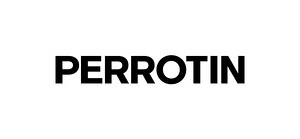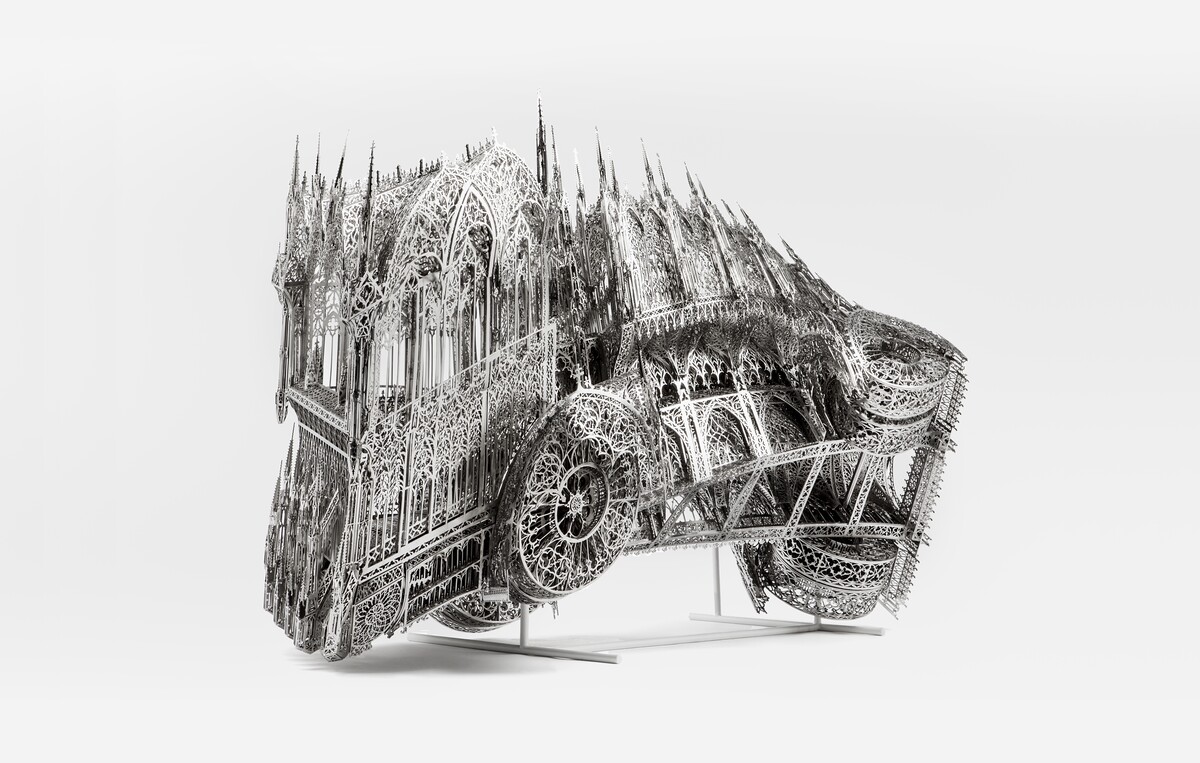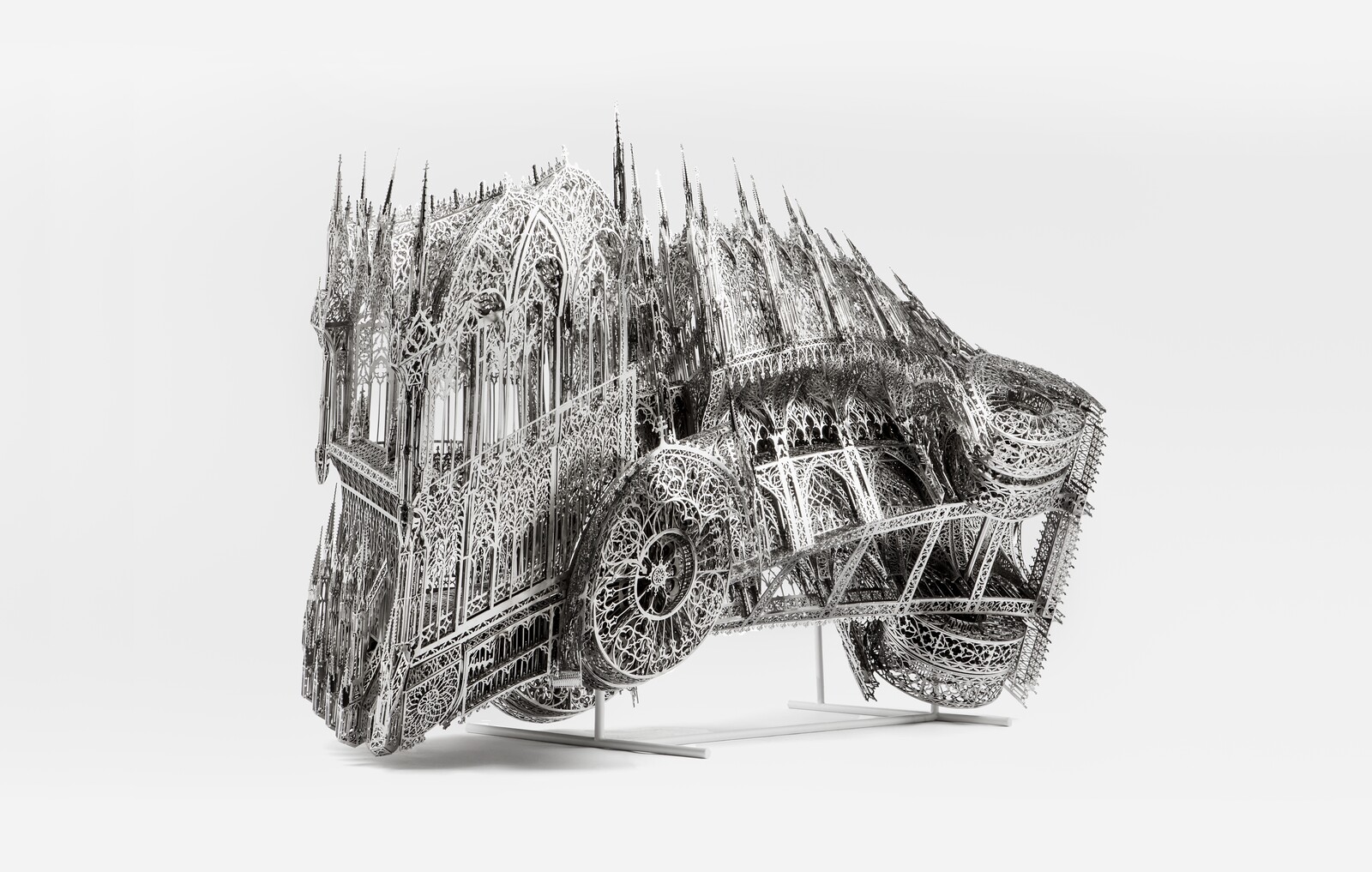September 20–October 20, 2018
3/F, 27 Huqiu Road
Huangpu District
200002 Shanghai
China
To mark the opening of its gallery in Shanghai, Perrotin is pleased to present a solo exhibition by the Belgian artist Wim Delvoye (b. 1965), the first to be held in the Chinese metropolis. Playing with both artistic conventions and the conventions of consumer society, reappropriating everyday objects as well as the symbols and icons of the history of art, Wim Delvoye questions, through his seemingly inflammatory works, the apparently irreconcilable conflict between use and value, craft and technology, high and low culture.
Bringing together more than 30 iconic pieces from Wim Delvoye’s oeuvre of the past 15 years, this exhibition strengthens the artist’s years-long relationship with China. In 2002 already, his stained-glass windows from the “Chapel” series were part of the travelling group exhibition The Long March Project and were exhibited at the Jinhua Temple in Moxi, in the province of Sichuan. Between 2003 and 2010, Delvoye had a farm on the outskirts of Beijing where pigs were raised: Delvoye had them tattooed, thereby turning them into “living art.” These live pigs were at the heart of the artist’s first solo exhibition in China, organized by the Xin Beijing Gallery in 2007. Also featured in that exhibition was Cloaca Quattro, a machine that is as scientific as it is absurd and provocative which the artist developed in the late 1990s already with an eye to artificially reproduce the human digestive system. Another version of this installation, Cloaca No. 5, was presented in 2016 at the Today Art Museum of Beijing and will feature in the forthcoming exhibition at the Yuz Museum of Shanghai.
A souvenir of the artist’s porcine adventure, the three-screen video installation Art Farm, presented in the exhibition, compiles a week in the life of his pigs, whose tattooed hides, after their death, were treated like paintings and stretched on frames. Delvoye plays with the symbolic ambivalence, somewhere between dirtiness, richness and opulence, of the animal that has become the trivial support of a globalized iconography that blends religious motifs, luxury brand logos and characters borrowed from the world of Walt Disney, with whom the artist shares the same initials.
Pigs are also at the heart of “Tapisdermy,” a series which, while flirting with blasphemy, plays on the confrontation between an animal believed to be impure in the Islamic world and the craftsmanship of a country, Iran, which the artist is particularly fond of. This visual and semiotic dichotomy between form and ornament is once more at work in Untitled, a fire extinguisher whose aluminium surface has been embossed with Persian motifs by Iranian craftsmen.
As though he wanted to be part of an ever-present past, in Suppo—the key piece of the exhibition—the artist offers an ironic reinterpretation of the conventions of Gothic ornamentation. The result is a monumental, laser-cut and twisted iron filigree that takes the form of an irreverent tribute to the soaring architectures of the artist’s native Flanders. This work is a reduced version of the 11-metre-high work presented in 2012 under the pyramid of the Louvre, on the occasion of an exhibition by the artist in the world’s largest museum. Like a contemporary Viollet-le-Duc, Delvoye imagines hyper-Gothic architectures with an industrial appearance that take the form of a lorry or a concrete mixer and that are treated as though they were cathedrals: despite its profane character, everyday life thereby acquires a sacred aura. The pieces presented at Perrotin echo Tower and Pergola, the majestic pieces installed since 2012 in Shanghai’s Jing’an Sculpture Park.
This same presence of the past recurs in the deformed sculptures in golden bronze (Nu Debout) or in lacquered bronze (Theodore Rivière Carthage, Satyr) baroque anamorphoses and torsions of often forgotten masterpieces of classical or academic sculpture. In line with this series in which the artist involves digital technology in his creative process, Delvoye appropriates the Chinese visual vernacular to produce one twisted version in marble of ivory statuettes dating from the Qing dynasty Untitled, thereby perpetuating the ironic reappropriation of the styles and works of the past that has fed his work from the start.
Text by François Bridey, Curator at the Musée du Louvre, Oriental collections, June 2018.
About the artist
Born in 1965 in Wervik, Belgium. Lives and works in Ghent, Belgium and Brighton, UK.
Wim Delvoye appropriates and diverts art-historical styles and motifs to sublimate trivial yet rather unconventional objects, or sometimes even living subjects. Perhaps best known for naturalizing tattooed pigs in China, or mechanically replicating the digestive system to produce real feces within exhibition spaces, his very eclectic and subversive practice spans a wide range of mediums, including drawing, sculpture and installation. Constantly oscillating between antagonistic realms such as the sacred and the profane, or the local and the global, he sarcastically confronts the various myths that feed our contemporary society from religion to science, and capitalism via unexpected hybridization. Whether he twists the inkblots of Rorschach psychological tests into sleek bronze idols, or cement trucks into laser-cut steel neo-gothic cathedrals, most of his works implement expert craftsmanship along with high technology. Wim Delvoye’s evershifting, conceptual-adjacent aesthetics further questions the commodification of art by strategically and provocatively escaping any attempt at definitive categorization or labeling.
Delvoye has had nearly 100 solo gallery and museum exhibitions since 1986, including New Museum in New York, The Power Plant in Toronto, Peggy Guggenheim Collection in Venice, Museum of Old and New Art in Australia, Centre Pompidou and Mus.e du Louvre in Paris, Pushkin State Museum of Fine Arts in Moscow, The Tehran Museum of Contemporary Art in Iran,the Zaha Hadid-designed Heydar Aliyev Center in Azerbaijan and the Museum Tinguely in Basel. His work has been featured in such significant group shows as the Venice Biennale, Documenta IX, Sydney Biennale, Lyon Biennial and Shanghai Biennale and is represented in major public collections worldwide.




